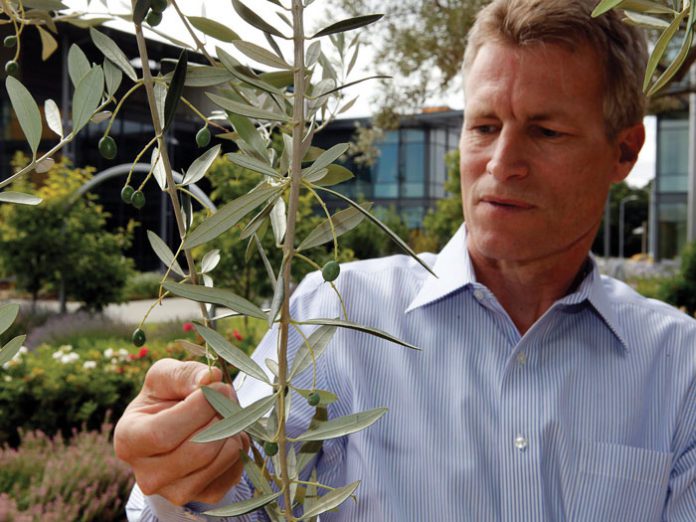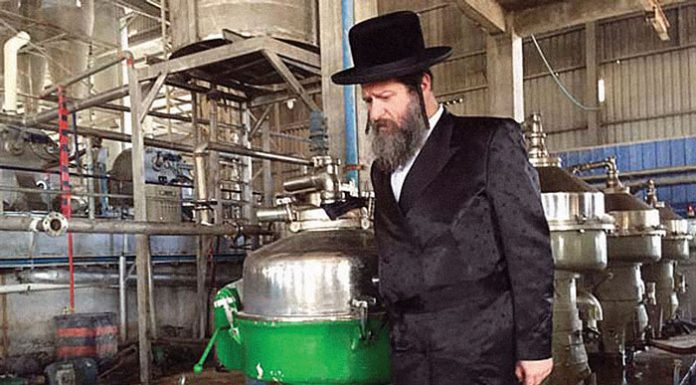On the day I started the consortium, they burned my car, they burned down part of my home and I was inside with my wife and my daughter.” That was how an olive oil producer from Sicily, Nicola Clemenza, described the day he was nearly killed after he organized 200 farmers to oppose mafia control of the market in his area. The mafia controls many aspects of food production in Italy, and olive oil is an exceptionally lucrative commodity. Global production of olive oil in 2015 through 2016 was approximately 3.09 million metric tons, with a value of about $11 billion, and shady practices can net sellers profits higher than that of illegal drugs. Part of what organized crime does in its control of olive oil is simply to control the prices to maximize profits, but another aspect is that it adulterates a certain amount of high quality olive oil with lesser grades of olive oil, or even with oils that aren’t from olives at all. Earlier this year, 60 Minutes ran an exposé on the Italian mafia’s role in the olive oil market. The journalists visited the sensory panel run by the Italian military and police force known as the Carabinieri, where they filmed olive oil experts taste-testing samples of oil. As they reported, the Carabinieri—which has a health and safety division that, among other things, investigates olive oil fraud—had interdicted 7,000 tons of “fake” olive oil, a large part of which was heading to the US. At the sensory panel, the taste testers practiced strippaggio, the method of sucking in air while tasting so that the oil mists the mouth and palate. Such experts—the Carabinieri employ 60—are often considered a more accurate method of testing olive oil than current chemical tests, and they have exposed many shipments of olive oil that does not match its labeling—or isn’t olive oil to begin with.
Italy’s reputation as a producer of olive oil took heavy hits in the early ’90s, when tens of thousands of tons of hazelnut oil were found to have been brought into Italy by large distributors, who mixed them with olive oil and sold them as extra virgin olive oil. Domenico Ribatti, the owner of Riolio, one of the largest suppliers of olive oil at the time, was sent to prison for 13 months after the scheme was revealed.
The Europeans eventually set in place a task force to investigate olive oil crimes; they found by the late 1990s that olive oil was the most adulterated food item in Europe. But continued investigations—and exposés, such as a series of articles and a book written by the journalist Tom Mueller—have kept the pressure on those who would sell “fake” olive oil.
The American market for olive oil is a major one; while global production doubled between 1990 and 2013, US imports tripled. And the larger truth about olive oil is that even when the mafia is not counterfeiting oil, some experts claim that getting an authentic bottle of extra virgin olive oil in an American supermarket is no easy task.
The question of the quality of imported olive oil in the US has become a massive bone of contention between the importers and domestic olive oil producers, almost all in California, with claims and counterclaims about the imports’ quality flying to and fro.
Recent legislation by the US Congress—itself attributed by some to meddling by the domestic olive oil industry—may shake up the market and knock out much of the problematic oil. But even after it goes into effect, finding good oil may still require a bit of knowledge.
Defining the finest
There are several methods that the mafia or others use to fake extra virgin olive oil. Hazelnut or sunflower oil colored with chlorophyll or heat-treated, deodorized low-quality olive oil can easily fool most consumers, especially when it’s mixed with real olive oil.
But to understand the problems with the olive oil market, the first necessity is to understand what extra virgin olive oil is. What makes something extra virgin?
“It’s like a fresh fruit juice,” Dan Flynn, the executive director of the UC Davis Olive Center, a major olive oil research center in California, told me when describing olive oil. That’s an analogy that I heard over and over again. Unlike other oils, olive oil is supposed to be minimally processed; the olives are crushed and the juice comes out. Though that was traditionally done by pressing them between stones, today that process generally goes on in a centrifuge or a hydraulic press, designed to avoid friction and heat that could hurt the taste of the oil.
The olive oil’s flavor, then, is the flavor of the olives used in it. If they are good fruit and properly ripened, the resulting oil has a good chance of being considered extra virgin. Different levels of ripeness create different flavors in olive oil. Greener olives make a bitter, grassy and pungent oil, while riper olives make milder, fruity, and buttery oils.
But the designation of “extra virgin” requires that a number of flavor and chemical characteristics be met. Sensory panels have a long list of flavors that they’re looking for that will make them reject olive oil as not extra virgin: “fustiness,” vinegariness, mustiness, and so on.
But for the EU, for example, the major difference between extra virgin olive oil and the lesser grades (virgin, ordinary virgin, and lampante) is the level of acidity in the oil, a sign of rancidity. Extra virgin olive oil must have no more than 0.8 percent acidity; virgin olive oil can have no more than two percent acidity; ordinary virgin can have no more than 3.3 percent, and lampante—which is considered unfit for direct consumption and just good for refining and other activities—is anything with a higher acidity than that.
Any oil that is refined—that is, is processed in any way—can no longer be called “virgin.”
Refined oils or virgin oils with bad tastes that were chemically deodorized are at the heart of the kind of mislabeling that the mafia is involved with. But what may be even more disturbing is that even when we’re getting actual virgin olive oil on our supermarket shelves, some experts claim that very few of us have gotten extra virgin olive oil, no matter what the labels say.
A long road

One of the first things to realize about olive oil, which also is the reason why most of our oils are probably not very good, is that olives are seasonal.
“There’s only one harvest a year, in the fall,” Larry Olmsted told me. In his book Real Food, Fake Food, Olmsted—who is a professor of creative writing at Dartmouth College and a travel journalist—looked at olive oils and found that “fake” isn’t just because of getting olive oils that aren’t real. It’s also because they simply have gotten too old.
In the Northern Hemisphere, the fall harvest of olives occurs around October and November. When an American heads to the store in December to get olive oil for Chanukah, it’s unlikely that the new crop of European olive oil has reached US shores yet. What you’re seeing in the store is at best from last year.
The savvy consumer will likely respond, “Yeah, but I found the best-by date, and the olive oil is still good.” But it turns out that a best-by or sell-by date just isn’t a great indicator of an olive oil’s freshness.
“The world consumes roughly the same amount of olive oil every year, but the harvest varies,” Olmsted told me. “So if they have a big harvest in Europe and make more oil than they sell, they just hold the extra in tanks and roll it over to the next year’s crop. So some of the olive oil going into the bottle is already a year old. It was bottled now, but it was harvested last year. Some of it is even two years old.”
Once it’s bottled, it still must be labeled and packed and shipped across an ocean. “The bulk of the supermarket oil from Europe hits the shelves in the early spring,” Olmsted said. By that time, oil from the previous year’s harvest is already 15 or 16 months old. How long can oil last and still taste good? Experts differ. The Olive Oil Times, an independent online magazine about the olive oil trade, mentions two years as a shelf life. Trade groups claim up to three. Olmsted said that he finds that a bottle will last on the shelf for 18 months from when the olives were harvested. That means that last year’s crop has very little time between when it gets to America and when it will start going bad.





















